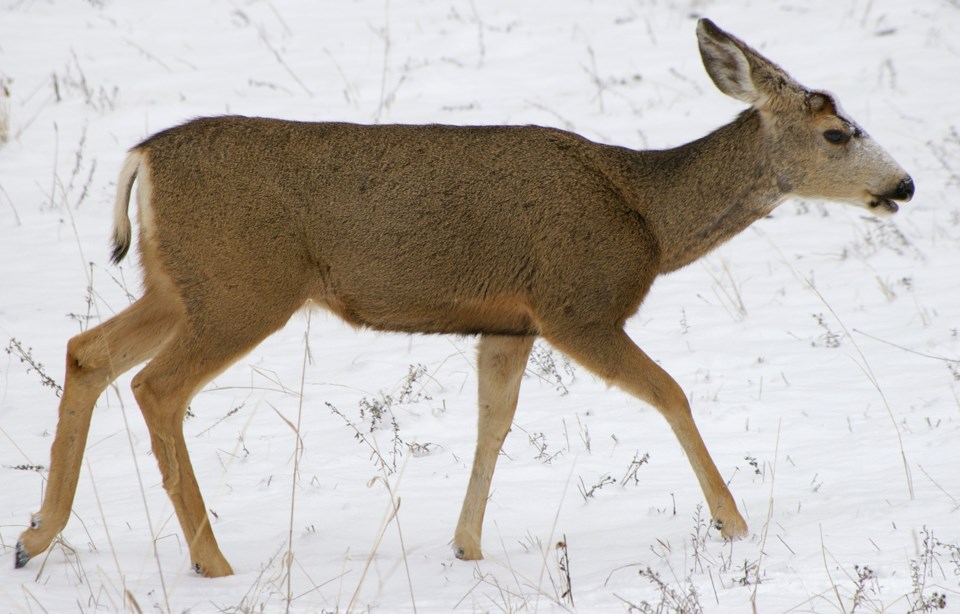Spring is here and so is the potential for conflicts with animals. Wildlife is an important part of Ontario’s natural and cultural heritage. Wild animals can be fun to observe from a safe distance, but there are times when wildlife can become a problem.
How can I prevent conflicts with wildlife?
Wildlife have the same basic needs as humans — food, water and shelter. Sometimes, humans and wildlife come into conflict when animals are trying to meet their basic needs. Often, conflicts can be prevented if we’re willing to make small changes, such as storing garbage so animals can’t get to it.
The best first step for dealing with unwelcome wildlife is to remove the food or shelter attracting them to your property. For more information about preventing and handling conflicts with different animals, visit ontario.ca/livingwithwildlife or contact your Ministry of Natural Resources and Forestry local district office at ontario.ca/mnroffices.
Who’s responsible for managing problem wildlife on properties?
People are responsible for managing problem wildlife on their property. The Ministry of Natural Resources and Forestry helps people and municipalities by providing information on steps they can take to address problems with wildlife.
Using an agent
You may hire or ask someone to deal with problem wildlife on your property. This person is your agent. The following individuals are designated by the ministry to act as agents:
- Hunters with an H1 Outdoors Card
- Licensed trappers
- Employees or agents of the Ontario Society for the Prevention of Cruelty to Animals (OSPCA)
- Members of a landowner’s immediate family acting on behalf of the landowner
- A person whose main business is removing problem wildlife
- Municipal employees with specific responsibilities for wildlife control (animal services).
Other people may act as agents. Contact your local Ministry of Natural Resources and Forestry office at ontario.ca/mnroffices for more information.
What actions can a property owner take?
The Fish and Wildlife Conservation Act sets out the legal actions property owners can take to deal with problem wildlife. Generally, property owners or their agents may capture, harass or kill problem wildlife to prevent damage to their property. There are important exceptions and requirements:
- White-tailed deer, elk and species on the Species at Risk in Ontario List cannot be captured, harassed or killed in protection of property without prior authorization of the ministry. Moose and woodland caribou may not be captured, harassed or killed at all. For more information regarding authorizations for species at risk, contact your local ministry office atontario.ca/mnroffices.
- You may not cause unnecessary suffering to any wildlife.
- Only people specifically authorized by the ministry can live-trap a black bear.
- A person who kills a black bear in protection of property anywhere in Ontario must immediately report it athttps://www.ontario.ca/page/
keep-dead-wild-animal, if keeping the bear, or call the local ministry office, if not keeping the bear. - A person who kills a wolf or coyote in protection of property in central and northern Ontario (roughly north of the Severn River, Bancroft and Pembroke) must immediately report it at https://www.ontario.ca/page/
keep-dead-wild-animal, or call the local ministry office in all other cases.
Releasing captured wildlife
If you capture wildlife for relocation, within 24 hours you must release it as close as possible to the capture site — less than a kilometre away — in similar habitat wherever possible, unless otherwise directed by the ministry.
If the animal is injured or sick, you can take it to an authorized wildlife rehabilitator. You may also take it to a veterinarian for temporary care and treatment. Please note that many veterinarians will not cover the cost.
The fact sheet on what to do if you find a sick, injured or orphaned wild animal provides more information.
Additional requirements
It is important to ensure that dependent offspring are not left behind when removing or relocating adults. In those cases, you should delay taking action until the young are old enough to fend for themselves or leave with the adults. If this is not practical or possible, orphaned animals can be taken to an authorized wildlife custodian.
If you must take action against wildlife, please consider your options and follow relevant laws and regulations. Property owners should check with their municipality about discharge of firearms bylaws. Only licensed trappers and farmers may possess and use body-gripping traps.
Problems with deer or elk
If you are a farmer who is experiencing problems with white-tailed deer or elk, you can apply for authorization from the ministry to harass or kill the problem white-tailed deer or elk on your property. There are special requirements and conditions that govern authorizations. Contact your local ministry office at ontario.ca/mnroffices for more information.
Learn more
- Visit ontario.ca/livingwithwildlife for more information on preventing and handling conflicts with different wildlife.
- To learn more about preventing and handling conflicts with wildlife under the Fish and Wildlife Conservation Act, please contact your local ministry office at ontario.ca/mnroffices.



